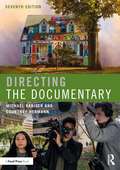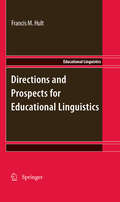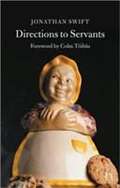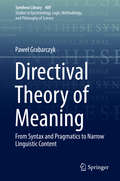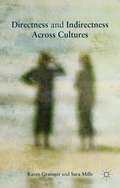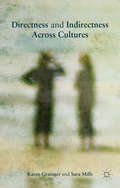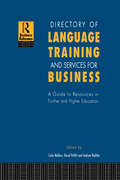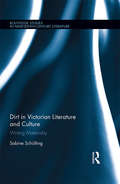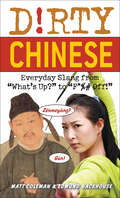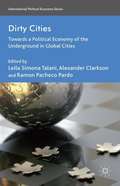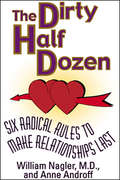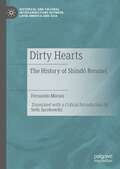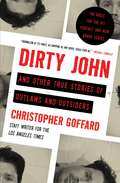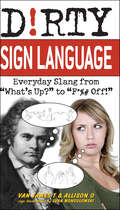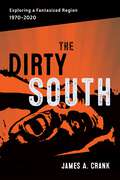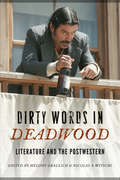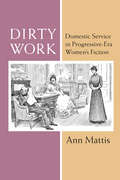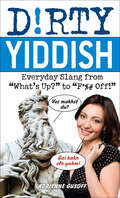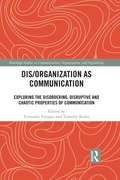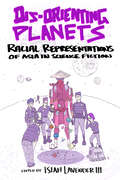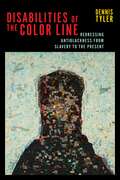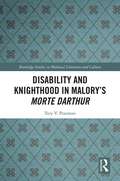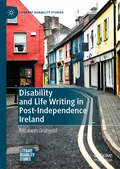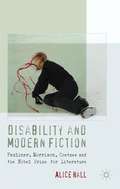- Table View
- List View
Directing the Documentary
by Michael Rabiger Courtney HermannDirecting the Documentary is the definitive book on the documentary form, that will allow you to master the craft of documentary filmmaking. Focusing on the hands-on work needed to make your concept a reality, it covers the documentary filmmaking process from top to bottom, providing in-depth lessons on every aspect of preproduction, production, and postproduction. The book includes dozens of projects, practical exercises, and thought-provoking questions, and offers best practices for researching and honing your documentary idea, developing a crew, guiding your team, and much more. This fully revised and updated 7th edition also includes brand new content on the rise of the documentary series, the impact of video on-demand and content aggregators, updated information on prosumer and professional video (including 4K+), coverage of new audio & lighting solutions and trends in post-production, coverage of the immersive documentary, and provides practical sets of solutions for low, medium, and high budget documentary film productions throughout. The companion website has also been fully updated to a variety of new projects and forms. By combining expert advice on the storytelling process, the technical aspects of filmmaking and commentary on the philosophical underpinnings of the art, this book provides the practical and holistic understanding you need to become a highly regarded, original, and ethical contributor to the genre. Ideal for both aspiring and established documentary filmmakers, this book has it all.
Directions and Prospects for Educational Linguistics
by Francis M. HultDirections and Prospects for Educational Linguistics explores innovations that have developed from the creative syntheses of diverse methodological and theoretical approaches used to explore a broad rang of issues and topics related to language (in) education. The volume provides unique insights into current practices and new frontiers for educational linguistics by bringing together contributions from scholars who draw upon on established research traditions while at the same time pushing their boundaries beyond the confines of specific disciplines. Each paper serves as a thought provoking starting point for scholars and advanced graduate students to contemplate directions and prospects for research that contributes to linguistically appropriate and socially responsible education.
Directions Home
by George Elliott ClarkeThe latest work from pioneering scholar George Elliott Clarke, Directions Home is the most comprehensive analysis of African-Canadian texts and writers to date. Building on the discoveries of his critically acclaimed Odysseys Home, Clarke passionately analyses the beautiful complexities and haunting conundrums of this important body of literature.Directions Home explores the trajectories and tendencies of African-Canadian literature within the Canadian canon and the socio-cultural traditions of the African Diaspora. Clarke showcases the importance of little-known texts, including church histories and slave narratives, and offers studies of autobiography, crime and punishment, jazz poetics, and musical composition. The collection also includes studies of significant contemporary writers such as George Boyd and Dionne Brand, and trailblazing African-Canadian intellectuals like A.B. Walker and Anna Minerva Henderson. With its national, bilingual, and historical perspectives, Directions Home is an essential guide to African-Canadian literature.
Directions to Servants
by Jonathan SwiftDirections to Servants is one of Jonathan Swift's last completed works. It displays all his caustic skill as a satirist and his unerring eye for the little annoyances of life.
Directival Theory of Meaning: From Syntax and Pragmatics to Narrow Linguistic Content (Synthese Library #409)
by Paweł GrabarczykThis book presents a new approach to semantics based on Kazimierz Ajdukiewicz’s Directival Theory of Meaning (DTM), which in effect reduces semantics of the analysed language to the combination of its syntax and pragmatics. The author argues that the DTM was forgotten because for many years philosophers didn’t have conceptual tools to appreciate its innovative nature, and that the theory was far ahead of its time.The book shows how a redesigned and modernised version of the DTM can deliver a new solution to the problem of defining linguistic meaning and that the theory can be understood as a new type of functional role semantics. The defining feature of the DTM is that it presents meaning as a product of constraints on the usage of words. According to the DTM meaning is not use, but the avoidance of misuse.Readers will see how the DTM was shelved for reasons that we don’t find so dramatic anymore, and how it contains enough original ideas and solutions to warrant developing it into a full-blown contemporary account. It is shown how many of the underlying ideas of the theory have been embraced later by philosophers and treated simply as brute facts about natural languages or even as new philosophical discoveries.Philosophers of language and researchers with an interest in how languages and the mind work will find this book a fascinating read.
Directness and Indirectness Across Cultures
by Sara Mills Karen GraingerThis book analyses the complex relationship between directness, indirectness, politeness and impoliteness. Definitions of directness and indirectness are discussed and problematised from a discursive theoretical perspective.
Directness and Indirectness Across Cultures
by Sara Mills Karen GraingerThis book analyses the complex relationship between directness, indirectness, politeness and impoliteness. Definitions of directness and indirectness are discussed and problematised from a discursive theoretical perspective.
Directory of Language Training and Services for Business: A Guide to Resources in Further and Higher Education
by Colin Mellors David Pollitt Andrew RadtkeLanguage acquisition and training is a key concern for businesses of all types and sizes. This Directory is an invaluable resource for anyone needing information on language training for business. The Directory also provides information on services for business such as translation and interpreting. Ordered A-Z by institution, the Directory will enable speedy identification of providers from a bank of over 400 institutional and other contacts across the UK.
Dirt in Victorian Literature and Culture: Writing Materiality (Routledge Studies in Nineteenth Century Literature)
by Sabine SchültingAddressing the Victorian obsession with the sordid materiality of modern life, this book studies dirt in nineteenth-century English literature and the Victorian cultural imagination. Dirt litters Victorian writing – industrial novels, literature about the city, slum fiction, bluebooks, and the reports of sanitary reformers. It seems to be "matter out of place," challenging traditional concepts of art and disregarding the concern with hygiene, deodorization, and purification at the center of the "civilizing process." Drawing upon Material Cultural Studies for an analysis of the complex relationships between dirt and textuality, the study adds a new perspective to scholarship on both the Victorian sanitation movement and Victorian fiction. The chapters focus on Victorian commodity culture as a backdrop to narratives about refuse and rubbish; on the impact of waste and ordure on life stories; on the production and circulation of affective responses to filth in realist novels and slum travelogues; and on the function of dirt for both colonial discourse and its deconstruction in postcolonial writing. They address questions as to how texts about dirt create the effect of materiality, how dirt constructs or deconstructs meaning, and how the project of writing dirt attempts to contain its excessive materiality. Schülting discusses representations of dirt in a variety of texts by Charles Dickens, E. M. Forster, Elizabeth Gaskell, George Gissing, James Greenwood, Henry James, Charles Kingsley, Henry Mayhew, George Moore, Arthur Morrison, and others. In addition, she offers a sustained analysis of the impact of dirt on writing strategies and genre conventions, and pays particular attention to those moments when dirt is recycled and becomes the source of literary creation.
Dirty Chinese: Everyday Slang from "What's Up?" to "F*%# Off!" (Dirty Everyday Slang)
by Matt Coleman Edmund BackhouseFoul your mouth—while expanding your Mandarin vocabulary—with a guide to the phrases that could get you a laugh . . . or a punch in the face.Next time you’re traveling or just chattin’ in Chinese with your friends, drop the textbook formality and bust out with expressions they never teach you in school, including:Cool slangFunny insultsExplicit sex termsRaw swear wordsDirty Chinese teaches the casual expressions heard every day on the streets of China:What’s up? Zenmeyàng?Fuck it, let’s party. Qù tama, zánmen chuqù feng ba.Who farted? Shéi fàng de pì?Wanna try doggy-style? Yàobù zánliar shìshì gou cào shì?Son of a bitch! Gouniángyang de!I’m getting smashed. Wo ganjué heduo le.I can’t eat this shit! Wo chi bù xià qù!
Dirty Cities
by Leila Simona Talani Alexander Clarkson Ramon Pacheco PardoOver the last three decades, the rapid growth of transport and telecommunications systems and the expansion of transnational diasporas have intensified links between the urban spaces of Europe, Africa, the Middle East and Southeast Asia. Increasing global mobility has fostered the development of 'informal' trading networks in which diaspora communities play a central role. As a consequence, the shadow economies of societies with vastly different levels of prosperity have begun to come into contact with one another. While the economic consequences of diaspora trading networks have been extensively explored over the past few decades, the impact of globalization on the economic underground has received much less attention. This volume elaborates on the definition of globalization, on its impact on illegal and illicit activities, and on the role of the 'Global City' as the intersection between the local and the global which allows for the empowerment of generally marginalized actors often through technological progress. The contributors explore the dark side of globalization, more specifically, the relations between globalization and the new dynamics of legal/illegal practices in urban settings of global cities.
The Dirty Half Dozen: Six Radical Rules to Make Relationships Last
by Anne Androff William NaglerSay goodbye to conventional wisdom and say hello to "The Dirty Half Dozen." Here is a fresh, iconoclastic set of rules for improving your relationship dramatically.<P>Based on thirty years of psychiatric literature, including over 1,000 studies on relationships, as well as the author's own personal relationship experience, this book shows how satisfying, long-term relationships are not about abstract concepts like romance, honesty, or intimacy. They are about something far more simple. <P>Learn the value of the little white lie, the destructive potential of the "petty" differences, the myth of the perfect relationship, the care and feeding of the happy, lasting relationship within tension-free surroundings, and other secrets that every couple needs to know.
Dirty Hearts: The History of Shindō Renmei (Historical and Cultural Interconnections between Latin America and Asia)
by Fernando MoraisFernando Morais’ Dirty Hearts is a tour de force of literary journalism that investigates the discriminatory treatment of the Japanese immigrant community in Brazil during World War II and in the aftermath of Japan’s defeat and unconditional surrender. In contrast to the internment camps and compulsory military service that characterized the Japanese American wartime experience, this book traces the rise to power of Shindō Renmei, an ultranationalist secret society that formed in response to the anti-Japanese measures enacted under Getulio Vargas’ Estado Novo. Based in São Paulo, the group used terrorism, propaganda campaigns, and conspiracy theories to violently enforce its narrative of Japan’s victory. These traumatic events nevertheless brought about a permanent transformation in the Japanese Brazilian community from a largely insular colony with close ties to its imperial homeland to its new identity as an ethnic minority in postwar Brazil’s fraught racial democracy.
Dirty John and Other True Stories of Outlaws and Outsiders
by Christopher GoffardA collection of newspaper stories by award-winning Los Angeles Times reporter Christopher Goffard—including &“Dirty John,&” the basis for the hit podcast and the upcoming Bravo scripted series starring Connie Britton and Eric Bana.Since its release in fall 2017, the &“Dirty John&” podcast—about a conman who terrorizes a Southern California family—has been downloaded more than 20 million times, and will soon premiere as a scripted drama on Bravo starring Connie Britton and Eric Bana. The story, which also ran as a print series in the Los Angeles Times, wasn&’t unfamiliar terrain to its writer, Christopher Goffard. Over two decades at newspapers from Florida to California, Goffard has reported probingly on the shadowy, unseen corners of society. This book gathers together for the first time &“Dirty John&” and the rest of his very best work. &“The $40 Lawyer&” provides an inside account of a young public defender&’s rookie year in the legal trenches. &“Framed&” offers an unblinking chronicle of suburban mayhem (and is currently being developed by Netflix as a film starring Julia Roberts). A man wrongly imprisoned for rape, train-riding runaways in love, a Syrian mother forced to leave her children in order to save them, a boy who grows up to become a cop as a way of honoring his murdered sister, another boy who struggles with the knowledge that his father is on death row: these stories reveal the complexities of human nature, showing people at both their most courageous and their most flawed. Goffard shared in the Los Angeles Times&’ Pulitzer Prize for Public Service in 2011 and has twice been a Pulitzer finalist for feature writing. This collection—a must-read for fans of both true-crime and first-rate narrative nonfiction—underscores his reputation as one of today&’s most original journalistic voices.
Dirty Sign Language: Everyday Slang from "What's Up?" to "F*%# Off!" (Dirty Everyday Slang Ser.)
by Evan Wondolowki Allison O Van James TGET D!RTY!Next time you're signing with your friends, drop the ASL textbook formality and start flashing the signs they don't teach in any classroom, including: cool slang funny insults explicit sex terms raw swear wordsDirty Sign Language teaches casual everyday words and expressions like: Peace out! Asshole. Bit me! Dumbfuck! Boner I'm hung like a horse.
The Dirty South: Exploring a Fantasized Region, 1970–2020 (Southern Literary Studies)
by James A. CrankThe Dirty South examines the shifting significances of the South as a constructed, fantasized region in the American psyche, particularly its frequent association with tropes of dirt that emphasize soil, garbage, trash, grit, litter, mud, swamp water, slime, and pollution. Beginning with iconic works from the 1970s such as Deliverance and The Texas Chainsaw Massacre, James A. Crank traces the image of a “dirty” South into the twenty-first century to explore the social, political, and psychological effects of the region’s hold on the imaginations of southerners and nonsoutherners alike.With a focus on media forms through which southern identity gets articulated and questioned—including horror movies, Swamp Thing comics, and popular music by artists such as Waylon Jennings and OutKast—The Dirty South probes the sustained fascination with southern dirtiness while reflecting on its causes and consequences since the end of the civil rights era. Highlighting the period from 1970 to 2020, during which the South began to represent several new possible identities for the nation as a whole and for the area itself, Crank considers the ways that southerners have used depictions of dirt to create and police boundaries and to contest those boundaries. Each chapter pairs prominent literary or cultural texts from the 1970s with more contemporary works, such as Jordan Peele’s film Get Out, which recycle similar investments or, critically, challenge the inherent whiteness of the earlier images.By historicizing fantasies of the region and connecting them to the first decades of the twenty-first century, The Dirty South reveals that notions about southern dirtiness proliferate not because they lend authenticity or relevancy to the U.S. South, but because they aid so conspicuously in the zombified work of tethering investors (real and imagined) to a graveyard of ideas.
Dirty Words in Deadwood: Literature and the Postwestern (Postwestern Horizons)
by Melody Graulich Nicolas S. WitschiDirty Words in &“Deadwood&” showcases literary analyses of the Deadwood television series by leading western American literary critics. Whereas previous reaction to the series has largely addressed the question of historical accuracy rather than intertextuality or literary complexity, Melody Graulich and Nicolas S. Witschi&’s edited volume brings a much-needed perspective to Deadwood&’s representation of the frontier West.As Graulich observes in her introduction: &“With its emotional coherence, compelling characterizations, compressed structural brilliance, moral ambiguity, language experiments, interpretation of the past, relevance to the present, and engagement with its literary forebears, Deadwood is an aesthetic triumph as historical fiction and, like much great literature, makes a case for the humanistic value of storytelling.&” From previously unpublished interviews with series creator David Milch to explorations of sexuality, disability, cinematic technique, and western narrative, this collection focuses on Deadwood as a series ultimately about the imagination, as a verbal and visual construct, and as a literary masterpiece that richly rewards close analysis and interpretation.
Dirty Work: Domestic Service in Progressive-Era Women’s Fiction (Class : Culture)
by Ann MattisDirty Work sheds light on the complex relationships between women employers and their household help in the early twentieth century through their representations in literature, including women’s magazines, conduct manuals, and particularly female-authored fiction. Domestic service brought together women from different classes, races, and ethnicities, and with it, a degree of social anxiety as upwardly mobile young women struggled to construct their identities in a changing world. The book focuses on the works of Charlotte Perkins Gilman, Edith Wharton, Gertrude Stein, Nella Larsen, Jessie Fauset, Anzia Yezierska, and Fannie Hurst and their various depictions of the maid/mistress relationship, revealing “a feminized and racialized brand of class hegemony.” Modern servants became configured as racial, hygienic, and social threats to the emergent ideal of the nuclear family, and played critical rhetorical roles in first-wave feminism and the New Negro movements. Ann Mattis reveals how U.S. domestic service was the political unconscious of cultural narratives that attempted to define modern domesticity and progressive femininity in monolithic terms.
Dirty Yiddish: Everyday Slang from "What's Up?" to "F*%# Off!" (Dirty Everyday Slang)
by Adrienne GusoffNext time you’re chattin’ with your khaverim (friends) and mishpukheh (family), bust out some Yiddish expressions that’ll liven up the conversation.Nothing is censored in Dirty Yiddish. It includes phrases for any situation, so readers have enough chutzpah (balls) to tell the local deli that they’ve waited long enough for their knish, and explicit swear words crude enough to shock Bubby and everyone else at the Passover seder. There’s even vulgar sex terminology so graphic it puts the outspoken Lower East Side princesses to shame. Bust out with expressions they never teach you in school, including cool slang, funny insults, explicit sex terms, and raw swear words. Dirty Yiddish teaches the casual expressions heard every day on the streets of New York . . . What’s up? Vos makhst du?Crazy bastard! Meshuggeneh momzer!I’m hammered. Ikh bin fershikkert.Don’t fuck with me! Bareh mikh nit!I have the shits. Ikh hob a shittern mogn.Lick my pussy. Lekh meyn lokh.Was it good for you? Tsufreedn?
Dis/organization as Communication: Exploring the Disordering, Disruptive and Chaotic Properties of Communication (Routledge Studies in Communication, Organization, and Organizing)
by Consuelo Vásquez Timothy KuhnThis book accounts for the transformation of organizations in a post-bureaucratic era by bringing a communicational lens to the ontological discussion on organization/disorganization, offering a conceptual and methodological toolbox for studying dis/organization as communication. Increasingly, scholars acknowledge that communication is constitutive of organization; because meaning is always indeterminate, communication also (and simultaneously) generates disorganization. The book synthesizes the major theoretical trends and empirical studies in communication that engage with dis/organization. Drawing on dialectics, relational ontologies, critical theory, systems theory, and affect thinking, the first part of the book offers communicational explanations of how dis/organization unfolds. The second part of the book grounds this theoretical reflection, providing empirical studies that mobilize diverse methodological and analytical frameworks (e.g., ethnography, situational, interactional and genre analysis) for studying the practices of dis/organization. Overall, the book exposes organizations (and organizing processes) as significantly messier, irrational (or a-rational), and paradoxical than scholars of organization typically think. It also offers readers the conceptual and methodological tools to understand these complex processes as communication. This book will be essential reading for scholars in organizational communication or management and organization studies, together with senior undergraduate and graduate students studying organizational communication, organizational discourse, discourse analysis (including rhetoric, semiotics, pragmatism, narratology) and courses in management studies. It will also be richly rewarding for organizational consultants, managers and executives.
Dis-Orienting Planets: Racial Representations of Asia in Science Fiction
by Isiah Lavender IIIContributions by Suparno Banerjee, Cait Coker, Jeshua Enriquez, Joan Gordon, Veronica Hollinger, Malisa Kurtz, Stephanie Li, Bradford Lyau, Uppinder Mehan, Graham J. Murphy, Baryon Tensor Posadas, Amy J. Ransom, Robin Anne Reid, Haerin Shin, Stephen Hong Sohn, Takayuki Tatsumi, and Timothy J. Yamamura Isiah Lavender III's Dis-Orienting Planets amplifies critical issues surrounding the racial and ethnic dimensions of science fiction. This edited volume explores depictions of Asia and Asians in science fiction literature, film, and fandom with particular regard to China, Japan, India, and Korea. Dis-Orienting Planets highlights so-called yellow and brown peoples from the constellation of a historically white genre. The collection launches into political representations of Asian identity in science fiction's imagination, from fear of the Yellow Peril and its racist stereotypes to techno-Orientalism and the remains of a postcolonial heritage. Thus the essays, by contributors such as Takayuki Tatsumi, Veronica Hollinger, Uppinder Mehan, and Stephen Hong Sohn, reconfigure the very study of race in science fiction. A follow-up to Lavender's Black and Brown Planets, this collection expands the racial politics governing the renewed visibility of Asia in science fiction. One of the few on this subject, the volume probes Gary Shteyngart's novel Super Sad True Love Story, the acclaimed film Cloud Atlas, and Guillermo del Toro's monster film Pacific Rim, among others. Dis-Orienting Planets embarks on a wide-ranging assessment of Asian representations in science fiction, upon the determination that our visions of the future must include all people of color.
Disabilities of the Color Line: Redressing Antiblackness from Slavery to the Present (Crip #5)
by Dennis TylerWinner of the 2023 Phi Beta Kappa Christian Gauss AwardHonorable Mention for the 2022 Robert K. Martin Book Prize from the Canadian Association for American Studies (CAAS)ASALH 2023 Book Prize FinalistReveals how disability and disablement have shaped Black social life in AmericaThrough both law and custom, the color line has cast Black people as innately disabled and thus unfit for freedom, incapable of self-governance, and contagious within the national body politic. Disabilities of the Color Line maintains that the Black literary tradition historically has inverted this casting by exposing the disablement of racism without disclaiming disability.In place of a triumphalist narrative of overcoming where both disability and disablement alike are shunned, Dennis Tyler argues that Black authors and activists have consistently avowed what he calls the disabilities of the color line: the historical and ongoing anti-Black systems of division that maim, immobilize, and stigmatize Black people. In doing so, Tyler reveals how Black writers and activists such as David Walker, Henry Box Brown, William and Ellen Craft, Charles Chesnutt, James Weldon Johnson, and Mamie Till-Mobley have engaged in a politics and aesthetics of redress: modes of resistance that, in the pursuit of racial and disability justice, acknowledged the disabling violence perpetrated by anti-Black regimes in order to conceive or engender dynamic new worlds that account for people of all abilities. While some writers have affirmed disability to capture how their bodies, minds, and health have been made vulnerable to harm and impairment by the state and its citizens, others’ assertion of disability symbolizes a sense of community as well as a willingness to imagine and create a world distinct from the dominant social order.
Disability and Knighthood in Malory’s Morte Darthur
by Tory PearmanThis book considers the representation of disability and knighthood in Malory’s Morte Darthur. The study asserts that Malory’s unique definition of knighthood, which emphasizes the unstable nature of the knight’s physical body and the body of chivalry to which he belongs, depends upon disability. As a result, a knight must perpetually oscillate between disability and ability in order to maintain his status. The knights’ movement between disability and ability is also essential to the project of Malory’s book, as well as its narrative structure, as it reflects the text’s fixation on and alternation between the wholeness and fragmentation of physical and social bodies. Disability in its many forms undergirds the book, helping to cohere the text’s multiple and sometimes disparate chapters into the "hoole book" that Malory envisions. The Morte, thus, construes disability as an as an ambiguous, even liminal state that threatens even as it shores up the cohesive notion of knighthood the text endorses.
Disability and Life Writing in Post-Independence Ireland (Literary Disability Studies)
by Elizabeth GrubgeldThis book is the first to examine life writing and disability in the context of Irish culture. It will be valuable to readers interested in Disability Studies, Irish Studies, autobiography and life writing, working-class literature, popular culture, and new media. Ranging from Sean O’Casey’s 1939 childhood memoir to contemporary blogging practices, Disability and Life Writing in Post-Independence Ireland analyzes a century of autobiographical writing about the social, psychological, economic, and physical dimensions of living with disabilities. The book examines memoirs of sight loss with reference to class and labor conditions, the harrowing stories of residential institutions and the advent of the independent living movement, and the autobiographical fiction of such acknowledged literary figures as Christy Brown and playwright Stewart Parker. Extending the discussion to the contemporary moment, popular genres such as the sports and celebrity autobiography are explored, as well as such newer phenomena as blogging and self-referential performance art.
Disability and Modern Fiction
by Alice HallDisability and Modern Fiction explores shifting definitions and representations of physical and mental impairment in 20th and 21st century culture through a focus on the work of William Faulkner, Toni Morrison and JM Coetzee. Taking as its starting point Virginia Woolf's essay 'On Being Ill' (1930), the book argues that focusing on literary representations of disability opens up new critical categories for the analysis of fiction. Through consideration of their work as critics and Nobel Prize-winning public intellectuals, as well as authors, the book proposes new ways of reading Faulkner, Morrison and Coetzee in relation to one another, and in doing so highlights the ethical, aesthetic and imaginative challenges they pose to readers.
